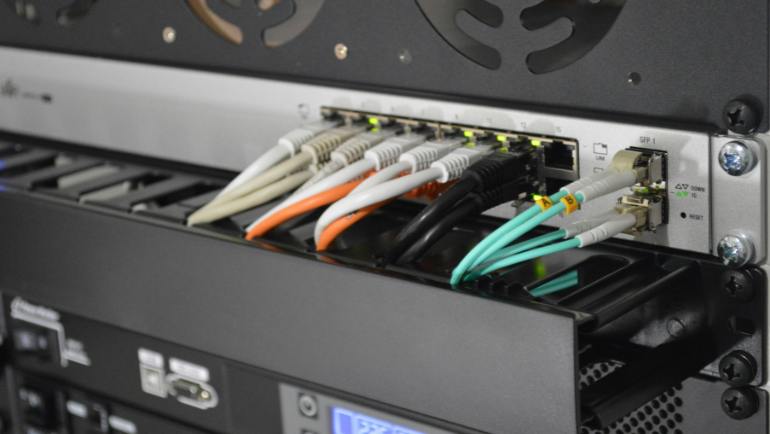
A server is hardware or software equipment that processes your request over a shared network and processes data through a server/client programming architecture. It acts as a data processor to compute complex and resource-intensive tasks for professional and private use. Therefore, enterprises use many types of servers for different heavy-duty operations and tasks.
This blog will explain different type of servers, their characteristics, and how they function in enterprises.
Types of Server Structure
The server has all the similar components as your personal computers like CPU processor, RAM, and storage device. Different types of servers are designed with different form factors intended needs and requirements. Businesses server technology can be categorized by form factors that you can buy for your enterprise.
Tower Servers
The Tower server looks like a PC case that sits on a flat surface, offering a standalone solution for enterprises. These servers require liquid or air cooling solutions, cables, and power supplies, to function efficiently. Tower servers are cost-effective and offer better scalability for businesses which makes them ideal for SMEs (Small and Medium Enterprises) requiring only a few servers.
Rack Servers
Rack servers are designed to be mounted into a 19-inch server rack or cabinet and server chassis that is used to house multiple horizontal servers. The Rackmount server has a uniform width and can vary in height from 1U to 4U. where U equals 1.75 inches in height. These servers offer easy upgradability and cost-effectiveness that plays an important role in the scalability of your businesses.
Blade Servers
Blade server houses multiple server modules that are also known as blades within a single server chassis. Every blade is a tear-down version of a regular server that contains essential components like a CPU processor, KVM (Kernel-based Virtual Machine), and cooling fans. These servers are power efficient and consume less electricity than traditional servers. Moreover, all the blade servers are hot-swappable which makes them easily serviceable.
Types of Servers
The following are the types of servers that most businesses use to streamline their operations and ensure efficient workflow
Application Server
Application servers provide an environment to deploy and run web-based applications on your browser. They allow users to use dynamic, high-performance applications without installing them on their systems. These servers focus on hosting dynamic websites utilizing object pooling, and messaging services.
Web Server
Web servers are programmed to host websites and applications through client programs like IE, chrome, edge, and Safari. They store, process, and deliver web content to the user using protocols like HTTP (HyperText Transfer Protocol), FTP (File Transfer Protocol), and SMTP (Simple Mail Transfer Protocol). Most OTT (Over The Top) platforms like Netflix and Amazon Prime also utilize web servers such as CDN (Content Delivery Network) to provide the content to the user. Web servers function similarly to application servers but can’t process dynamic, high-performance applications.
Mail Server
The mail server manages the sending, receiving, and storing of email messages. It collaborates with email clients like Outlook, Gmail, and more to ensure the email is properly routed and delivered to the intended recipient. Mail servers are essential components of the internet’s communication infrastructure, enabling reliable and efficient email communication.
Database Server
This server offers database services to client computers or devices using a client-server architecture. It manages the storage, retrieval, and updation of data within a database, ensuring data integrity, security, and efficient processing of queries. Large MNCs (Multinational Corporations) use Database servers to protect their sensitive and valuable corporate data.
Print Server
Print server allows connecting printers to client devices on a network. It accepts users’ print requests, queues them, and executes the printing tasks efficiently. Print Server utilizes different protocols to accomplish print jobs such as Internet Printing Protocols, Line printer Daemon Protocol, or JetDirect.
Authentication Servers
An Authentication server function works and verifies users, devices, and applications trying to access a network or system. It ensures that only authorized entities can access the data using verified credentials such as usernames, passwords, biometrics, or security tokens. The authentication server utilizes network monitoring protocols like LDAP(Lightweight Directory Access Protocol), RADIUS (Remote Authentication Dial-In User Service), and Kerberos. These servers play a critical role in maintaining security and enforcing access control policies within an organization’s IT infrastructure.
VPS – Server Virtualization
A VPS (Virtual Private Server) has the same components like RAM and works similarly to the physical server, it creates a separate space within the server using server virtualization for the user. A VPS makes reallocating resources and adjusting according to the workload much more accessible which helps in better efficiency and productivity.
Maintenance and Management Server
Enterprises install these servers to monitor systems and clients. Network Monitoring and management servers keep track of the traffic, responses, and replies in the network without interrupting the operations.
Proxy Server
A proxy server acts as a middleware between a client device and a server. It isolates the server and client devices to protect them from Cyberattacks and ransomware. Proxy servers also cache the frequently used data to retrieve quickly, resulting in better performance and reduction in overall bandwidth.
Popular Servers You Can Buy
Before buying a Server, always go with top IT brands to get the best product for your business. Computing Worlds has new, used, and refurbished servers of all types. Here are some branded servers for sale.
You can also request a bulk quote online for the top servers.
Frequently Ask Questions:
What is the most common server?
Apache, Microsoft’s Internet Information Server (IIS), and Nginx are the most popular web servers.
Why use a server instead of a desktop?
Servers have powerful CPUs like Intel Xeon Processor that can handle multiple users while processing a large amount of data. Whereas, it is not possible on a traditional desktop.
Can any computer be a server?
Yes, any computer with a decent specification can be converted into a server.
Servers are the silent architecture of businesses whether you want to deploy your website, run dynamic applications, or secure financial transactions. Servers are not only pieces of hardware or a program but an enabler of reliability, security, and scalability. Top brands like AMD and Inel launched Overclockable CPU processors that can also be underclocked, increasing the performance and reliability of enterprises’ operations.
For more updates on servers, stay connected with the Computing Worlds blog.






